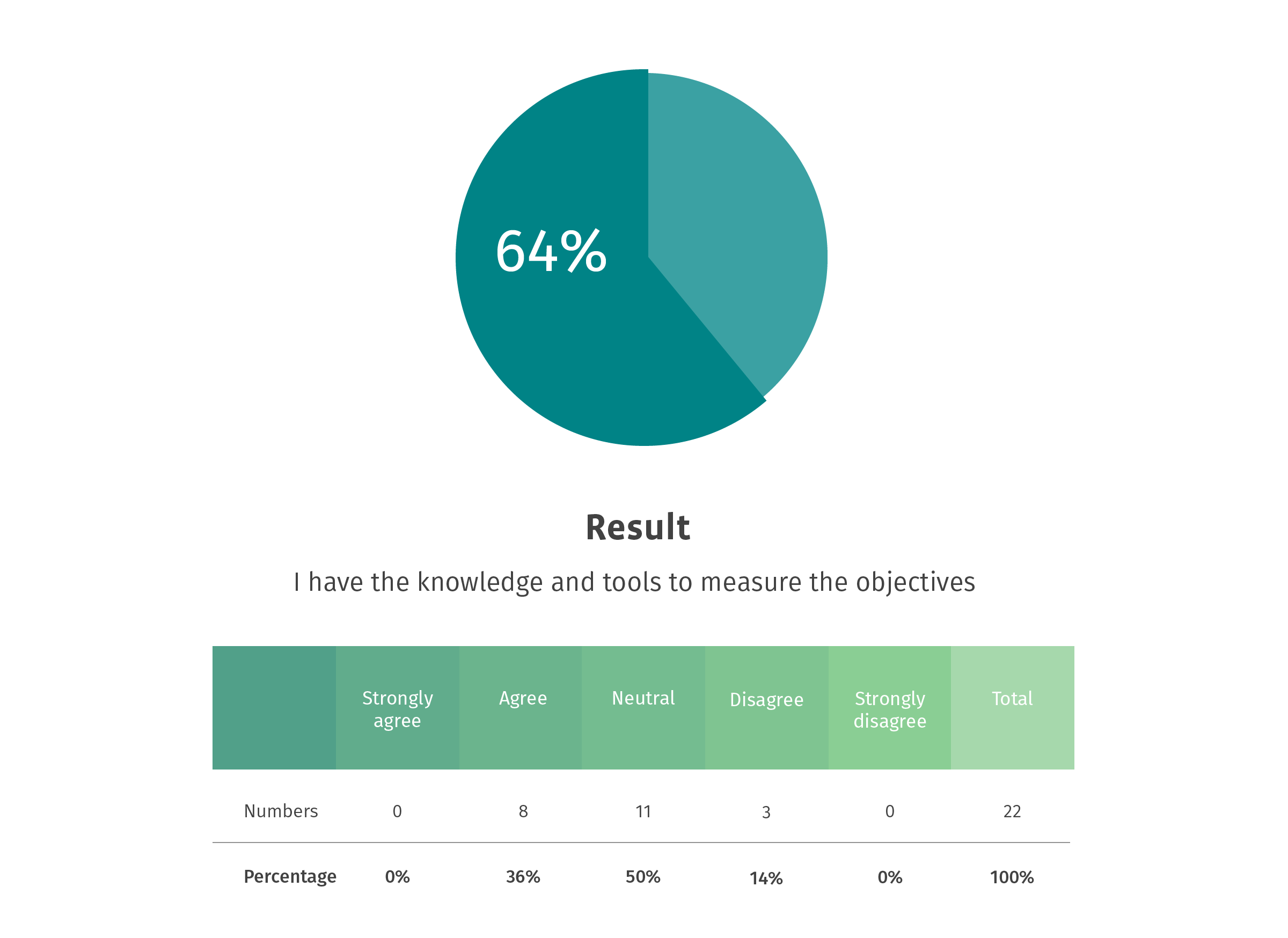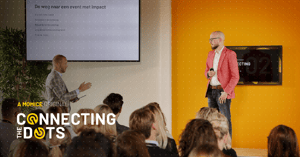On May 14, the second edition of Connecting the Dots took place at DUS [The Utrecht City Liberty] in Utrecht. During the event, event professionals learned how to determine direction and measure the results to create real impact with events. In this blog, we share the most important lessons of Connecting the Dots 2.
How do you ensure your event creates real impact? And how do you find out whether you actually succeeded? Together with Sendsteps and the Behavior Change Group, we cracked the code. The result? A scientific method for events with more impact: the Event Blueprint. During the second event – Create real impact with events – Robert Daverschot and behavioural scientist Gert Slob discussed and shared the biggest challenges and best tips for behavioural change and event objectives.
1. Objectives are essential for impact
At Momice, we believe that there is more to get out of events. Rutger Bremer, founder of Momice, states the industry still experience the effects of the way events were used 20 years ago. “Nowadays, events can contribute in many more ways than just as an annual employee party or networking event. Events have become a strategic medium for organisations and deserve more appreciation and support. To achieve this, events have to create a measurable impact and thus contribute to the organisation’s long-term goals.”
Even though the industry has made some major steps, events with even more impact can be organised. To do so, it is essential to determine proper objectives. After all: only by determining what you’re aiming for in advance, you can determine whether you have actually succeeded. However, the majority (64 percent) of the event professionals indicated they don’t know exactly how to measure the event objectives, nor do they have the right tools to do so. The fact that not every event creates impact is because not every event has a proper objective.

2. Objectives are always about behavioural change
The majority of event professionals indicate that the objectives of the client are not always clearly formulated. Unfortunately, they are also not properly questioning those objectives. Defining the objectives is not that easy for event professionals, even 10 percent says they find it (very) difficult. This is not surprising, since defining objectives is anything but easy.
Behavioural scientist Gert Slob recommends posing the why-question three times. “Then you will discover the true reason to organise an event. It will always be an intended behavioural change. You don’t organise an event to inform or inspire. Those may seem objectives, but there is always a bigger underlying goal. A proper objective is measurable, concrete and is about changing behaviour. To put it this way: you want your target audience to take action.”
3. Intrinsic motivation is key
Events are excellent means for changing behaviour. Especially because, compared to other means, events can help to influence behaviour like no other. For example, both punishments and rewards do not lead to intrinsic motivation. In addition, rewarding or punishing behaviour does not take into account that man is not a rational being by definition.
Therefore, you will do well to activate the intrinsic motivation as an event organiser. Do not focus on the organisation or its product, but on the needs of the target audience instead. Ensure the organisation’s solution fit your target audience’s intrinsic values. Make your target audience think about their goals and values, instead of deciding their goals for them. For example, put this question on a pack of cigarettes: why do you want to quit smoking? This way, everyone can think about their own reasons and motivations to quit smoking.
4. Objectives for every stage
Be aware of the different stages of an event: before, during and after the event. Define different sub-objectives for every stage to see how well the different stages have done. Keep the target audience’s limitations and motivations in mind for every objective.
For example, mention the attendance of a well-known expert at the event in the invitation. This increases the credibility of the organisation before the event. By organising a session during the event, you can push your target audience a bit closer to the desired behaviour. And sending out a list with tips increases the chance this behaviour will also occur after the event.
5. The Event Blueprint offers a solution
Intrinsic motivation, event stages, behavioural change and event objectives. It may all be a bit dazzling. Or you are enthusiastic and want to start working on the objectives of your event right away. That is why Momice and the Behavior Change Group developed a scientific method for event professionals to increase the impact of their events
In the Event Blueprint* you will go through five steps, which help you formulating proper objectives, a sharp target audience description and a clear key message for your events. This helps you think of a strategy for all stages of the event. The result: a surveyable report which helps you determining direction and measure the results afterwards.
*For now, the Event Blueprint is only available in Dutch. English version coming soon!
Conclusion
More than 100 event professionals attended the second edition of Connecting the Dots. During the event, insights from the field of behavioural science were shared so event professionals can create real impact with their events. After the event, 97% indicated they are truly more capable of taking their events to the next level. The Event Blueprint can help achieve this.
Connecting the Dots
Because Connecting the Dots is a Dutch-language event, it is less suitable for English speaking attendees. However, we feel the articles we write about this topic could be of added value for all event professionals. Are you interested in the content? Read more here!

